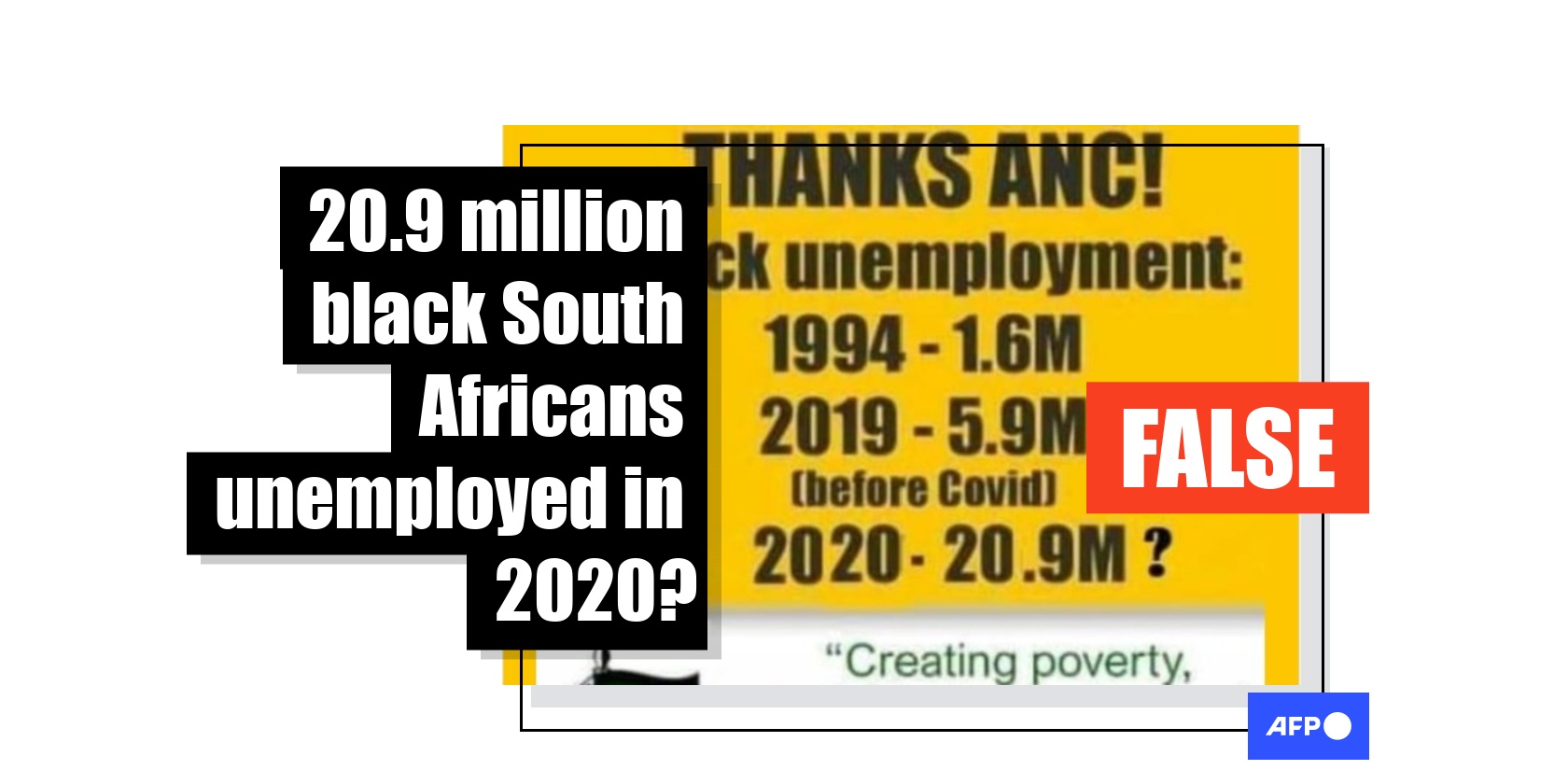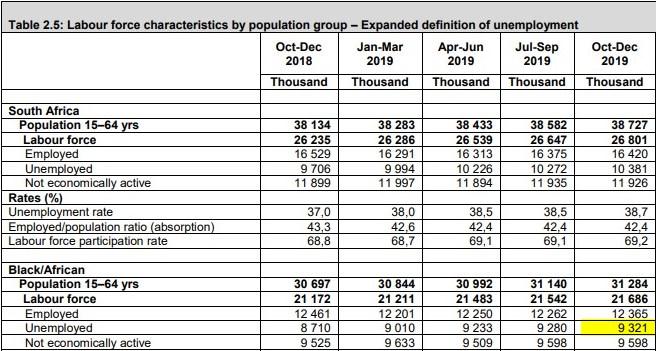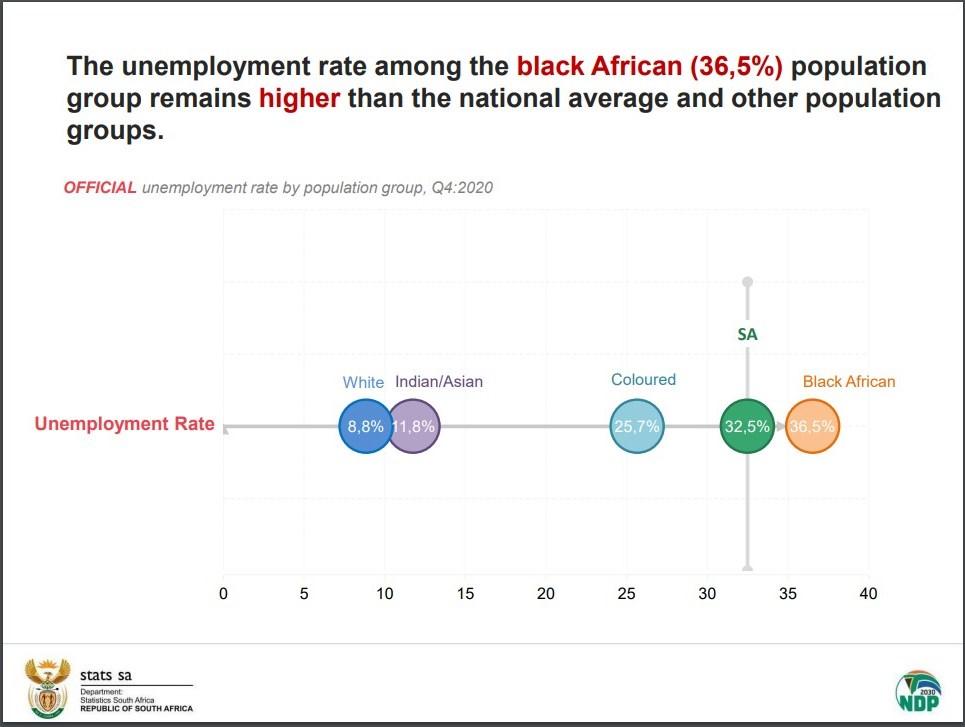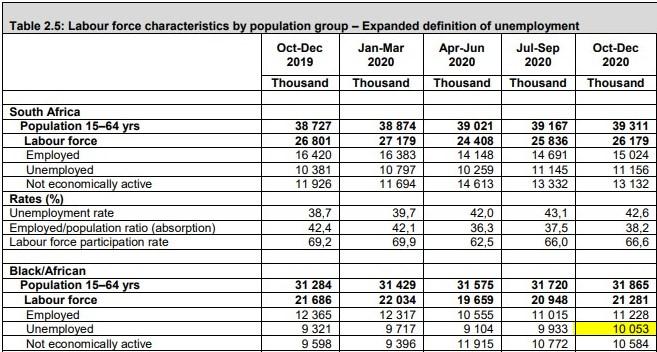
Graphic criticising ANC party overstates the number of unemployed black South Africans since 1994
- This article is more than one year old.
- Published on November 11, 2021 at 15:56
- 3 min read
- By James OKONG'O, AFP South Africa
Copyright © AFP 2017-2025. Any commercial use of this content requires a subscription. Click here to find out more.
The graphic was published on Facebook on June 2, 2021, and has since been shared more than 19,000 times.

“Thanks ANC! Black unemployment 1994 – 1.6M; 2019 – 5.9M (before Covid); 2020 – 20.9M? (sic)” reads part of the text in the graphic, which resurfaced online (here and here ) as the country prepared for local elections on November 1, 2021.
The ANC won 46 percent of the votes cast nationally – by far its worst showing since 1994. This decline in support has followed a trend of rising unemployment, which was already endemic before factoring in Covid-19 lockdowns, as AFP reported during public sector strikes in 2020.
However, the numbers cited in the graphic are incorrect and give the false impression that black unemployment since 1994 has increased more sharply than it has, especially in recent years.
Unemployment from 1994 to 2020
Unemployment is officially defined by Statistics South Africa (Stats SA), the government’s data agency, as anyone from the age of 15 to 64 who is out of work but actively looking for a job. The expanded definition of unemployment further includes those who are discouraged from looking for work or choose not to for other reasons.
According to Stats SA, the country’s official unemployment rate was 32.5 percent (7.2 million people) in the fourth quarter of 2020. Using the expanded definition, this increased to 42.6 percent (11.1 million people).
This compares to 1994 when official unemployment was sitting at 20.5 percent and 31.5 percent according to the expanded definition.
The data from Stats SA indicate that 4.16 million black people were unemployed in 1994 (or a rate of 43 percent) under the expanded definition, and not 1.6 million as stated in the graphic.

By 2019, there were 9.3 million unemployed black people (again, in terms of the expanded definition), almost double the 5.9 million mentioned in the claim.

South Africa went into strict lockdown at the end of March 2020 as Covid-19 infections soared for the first time.
AFP reported that nearly a third of the country’s workforce was unemployed in the third quarter of 2020, a 12-year high, as the pandemic took its toll.
By the end of 2020, the country had 10.1 million unemployed black people – higher than the national average but less than half the 20.9 million claimed in the graphic.


South Africa has one of the highest unemployment rates in the world and available data indicates that the unemployment problem in the country is not a recent phenomenon.
Analysts highlight the legacies of apartheid, poor government policies and sustained poverty as contributors to the high unemployment rates in the country.
Is there content that you would like AFP to fact-check? Get in touch.
Contact us
